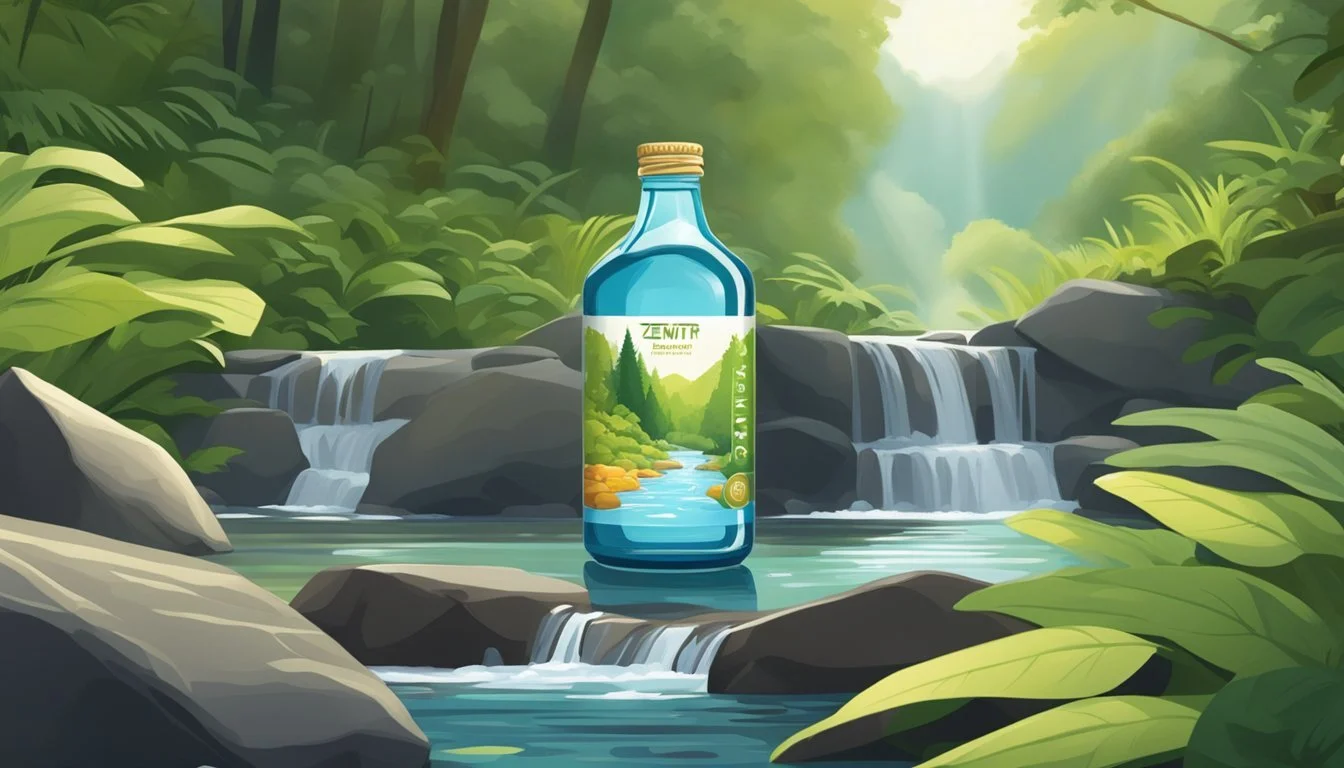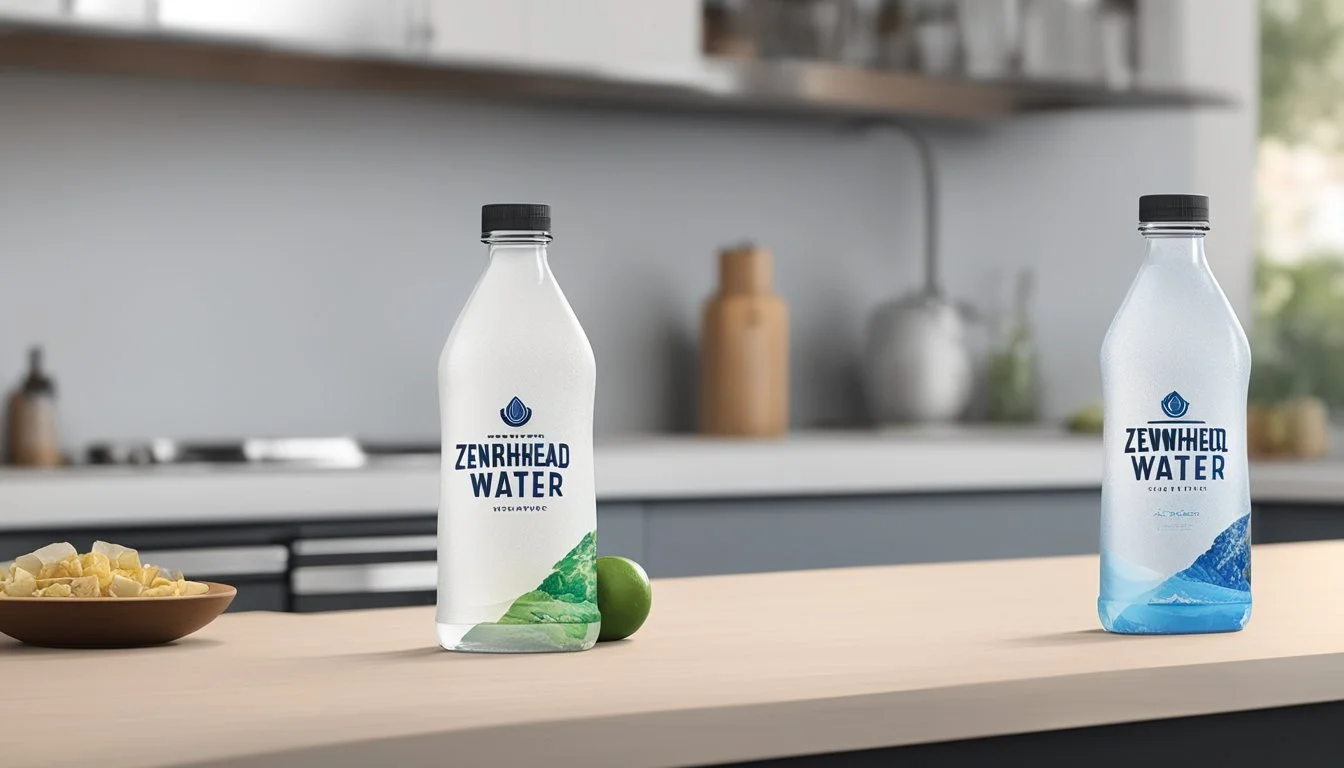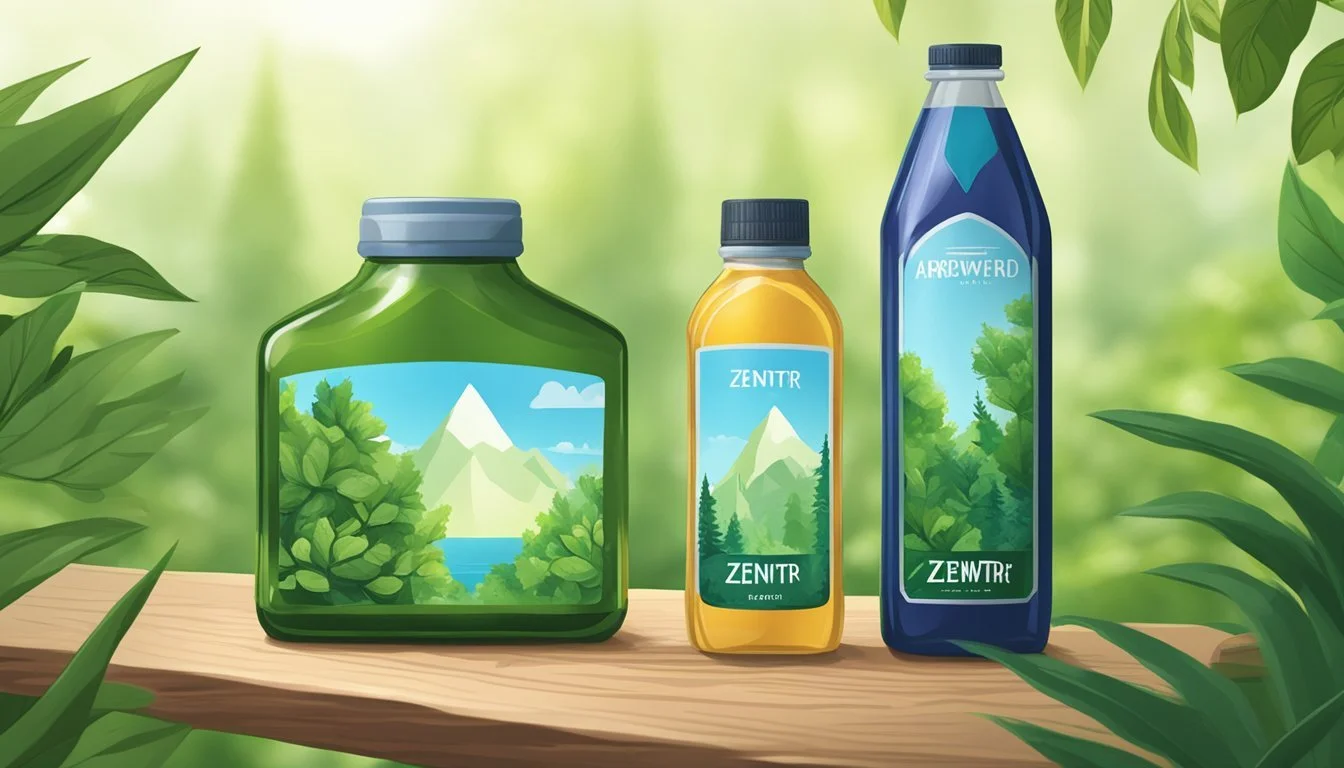Arrowhead vs. Zenwtr
Which Bottled Water is Better for You?
When it comes to choosing between Arrowhead and ZenWTR bottled water, many factors come into play such as taste, hydration benefits, and environmental impact. Arrowhead has long been a trusted name in the bottled water industry, known for sourcing its water from natural springs across the United States. It offers a crisp taste and reliable hydration that appeals to a wide range of consumers.
ZenWTR, on the other hand, specializes in providing alkaline water with a pH of 9.5, which some believe offers additional health benefits. Furthermore, ZenWTR stands out for its commitment to sustainability, as the brand uses recycled ocean-bound plastic for its bottles. For those seeking an environmentally friendly option, ZenWTR may be the better choice.
In terms of taste, while Arrowhead is appreciated for its natural, spring-sourced flavor, ZenWTR is noted for its smooth and refreshing quality without the aftertaste of plastic. Whether you prioritize taste, hydration properties, or environmental sustainability will determine which bottle suits your needs best. This comparison aims to guide you in making an informed decision between these two popular bottled water brands.
Comparing Arrowhead and ZenWTR
Choosing between Arrowhead and ZenWTR depends on factors such as brand reputation, water source, purification processes, and the taste profile combined with pH levels.
Brand Overview
Arrowhead is well-known for its Mountain Spring Water. It sources water from multiple springs across the western United States. Celebrated for its natural spring water, Arrowhead has a long-standing reputation for providing high-quality water that adheres to stringent safety standards.
ZenWTR is a relatively new entrant, distinguished by its commitment to sustainability and environmentally friendly practices. ZenWTR features purified water with a high pH level, aiming to offer a premium hydration experience. Its pH of 9.5 caters to those looking for alkaline water benefits.
Water Source and Origin
Arrowhead sources its water from natural springs located in the mountains of California and Colorado. These springs are known for their pristine quality and natural filtration through rock formations. The origin is clearly labeled, ensuring transparency.
ZenWTR utilizes purified water that starts from various municipal sources. Through advanced purification processes, the water is stripped of impurities, making it a clean and reliable option. Unlike natural spring sources, ZenWTR focuses on providing sustainable and clean water.
Purification and Filtration Methods
Arrowhead employs a multi-step filtration process that includes carbon filtration, UV treatment, and ozone disinfection. This process ensures the retention of natural minerals while making the water safe and clean.
ZenWTR undergoes several stages of purification including reverse osmosis, which removes dissolved solids and contaminants. The water is then ionized to achieve its high pH level of 9.5. This method ensures the removal of nearly all pollutants, resulting in ultra-pure water.
Taste Profile and PH Levels
Arrowhead is praised for its clean, crisp taste, attributed to its natural spring sources. The water maintains a balanced mineral content, creating a taste that is both refreshing and lightly mineralized. The pH level is typically around 7.7, reflecting its natural origin.
ZenWTR offers a smooth, pure taste due to its extensive purification process. The high pH level of 9.5 gives it an alkaline quality, which some consumers find beneficial for hydration and taste. The taste is often described as silky and smooth, appealing to those who prefer an elevated water experience.
Arrowhead ZenWTR Source Natural Mountain Springs Multiple Municipal Sources Purification Carbon Filtration, UV, Ozone Reverse Osmosis, Ionization Taste Crisp, Natural Smooth, Pure PH Level Around 7.7 9.5
Arrowhead and ZenWTR cater to different preferences and needs. Arrowhead's spring water is ideal for those looking for natural options, while ZenWTR's alkaline water appeals to those seeking premium, eco-friendly hydration.
Health and Hydration
When comparing Arrowhead and ZenWTR, it's essential to look at their impact on health and hydration. This involves examining factors like mineral and electrolyte content, as well as the specific benefits of alkaline water over regular tap water.
Minerals and Electrolyte Content
Mineral content plays a crucial role in hydration. Arrowhead water contains naturally occurring electrolytes and minerals like calcium, magnesium, and potassium. These elements help maintain fluid balance and support various bodily functions.
ZenWTR, on the other hand, is known for its added electrolytes. This makes it a popular choice among those looking for enhanced hydration. The electrolytes in ZenWTR include sodium and potassium, which aid in muscle function and overall hydration levels.
Both brands provide essential minerals that contribute to health and hydration.
Alkaline Water Benefits versus Tap Water
ZenWTR boasts a pH level of 9.5, making it an alkaline water. Alkaline water is believed to neutralize acid in the bloodstream, which can improve metabolism and increase energy.
Arrowhead, while providing clean and natural water, doesn’t focus on pH levels. This sets ZenWTR apart for those who specifically seek alkaline water. Alkaline water enthusiasts claim benefits like better hydration, improved digestion, and enhanced physical performance compared to regular tap water.
However, it is important to note that scientific evidence on the superiority of alkaline water remains limited. ZenWTR offers a unique selling point with its high pH, but personal preference and specific health needs play a critical role in choosing between the two.
Sustainability and Environmental Responsibility
Both Arrowhead and ZenWTR aim to minimize their environmental footprint and promote sustainable practices. Their efforts include the use of recycled plastic in their bottles and initiatives to preserve at-risk coastal environments.
Recycling and Use of Recycled Plastic
ZenWTR stands out by using 100% recycled, certified ocean-bound plastic for its bottles. This means they collect plastic waste from coastlines and waterways at risk of pollution. ZenWTR's commitment to ocean conservation also helps reduce the volume of plastic entering the ocean, making their efforts particularly impactful.
Arrowhead has taken significant steps toward sustainability by incorporating post-consumer recycled plastic into their bottles. While not as extensive as ZenWTR's approach, Arrowhead's use of recycled materials promotes the recycling industry and reduces reliance on virgin plastic. Both brands highlight recycled plastic use as a key aspect of their environmentally friendly practices.
Environmental Impact of Bottled Water
Bottled water production and distribution have notable environmental impacts due to energy consumption and resource use. ZenWTR’s focus on recycling ocean-bound plastic helps mitigate damage by repurposing waste material, which is crucial for protecting marine ecosystems.
Arrowhead, known for its rigorous purification process, emphasizes environmental sustainability in its operations. Their efforts include sourcing water responsibly and managing natural resources efficiently. Despite this, the environmental impact of transporting bottles remains a concern for all bottled water brands.
Both Arrowhead and ZenWTR are taking steps to be more sustainable, but the choice between them may depend on how much weight the consumer places on ocean conservation versus other sustainability measures like responsible sourcing and recycling rates.
Packaging and Convenience
Both Arrowhead and ZenWTR have distinct approaches to packaging that influence user convenience and environmental impact. Key considerations include bottle design, user experience, and product availability.
Bottle Design and User Experience
Arrowhead's traditional plastic bottles prioritize simplicity and cost-effectiveness. These bottles are lightweight, easy to carry, and widely recyclable. The cap design is straightforward, allowing for easy opening and closing. While practical, the design lacks innovation and could be seen as contributing to plastic waste.
ZenWTR, on the other hand, offers bottles made from 100% recycled ocean-bound plastic (rPET). This eco-friendly approach reduces environmental impact. The sleek design features a modern look and comfortable grip, enhancing user experience. ZenWTR also announced future packaging in aluminum and glass options, catering to varied consumer preferences. These materials not only offer recyclability but also aim to elevate the drinking experience.
Availability and Accessibility
Arrowhead is a long-standing brand with extensive distribution networks. Its products are readily available in supermarkets, convenience stores, and online platforms. The label is recognized and trusted, ensuring easy access for consumers.
ZenWTR, introduced in 2020, has quickly expanded its market presence. Initially available in select grocery stores, it has increased its availability in various retail outlets and online. The brand's commitment to sustainability appeals to environmentally conscious consumers, adding a unique value proposition.
Both brands ensure convenience through widespread availability, though ZenWTR's innovative packaging may attract a niche market prioritizing environmental responsibility.
Market Comparison
When comparing ZenWTR and Arrowhead, key factors to consider are their market positioning, prices, and the perceived value they offer to consumers. Different demographics and preferences shape how these bottled water brands compete.
Competitor Analysis
ZenWTR distinguishes itself by emphasizing its high alkalinity with a pH of 9.5 and promoting its eco-friendly packaging. The brand's commitment to sustainability includes using 100% recycled ocean-bound plastic, which appeals to environmentally conscious consumers.
Arrowhead, on the other hand, is known for its natural spring water sourced from multiple springs across the western United States. It boasts a well-established presence in the market and is often associated with rugged, natural imagery.
In the larger market context, ZenWTR and Arrowhead face competition from brands like Fiji, Evian, and Smartwater, each known for unique characteristics. Fiji boasts natural artesian water, while Evian is famed for its mineral content. Smartwater, similar to ZenWTR, promotes vapor-distilled water with added electrolytes.
Price Point and Value Considerations
ZenWTR is positioned at a premium price point due to its alkaline properties and sustainable packaging. Consumers tend to pay more, driven by health benefits claims and environmental concerns. A typical bottle of ZenWTR can cost around $2 to $3, placing it in the higher-end market segment.
Arrowhead, in contrast, is more affordably priced, making it accessible to a larger demographic. A bottle of Arrowhead usually costs between $1 to $1.50, aligning it with other mainstream brands like Dasani and Aquafina.
While ZenWTR appeals to a niche market prioritizing health and eco-friendliness, Arrowhead attracts cost-conscious consumers who prefer natural spring water without a hefty price tag. This differentiation in pricing impacts their respective market shares and consumer loyalty.





